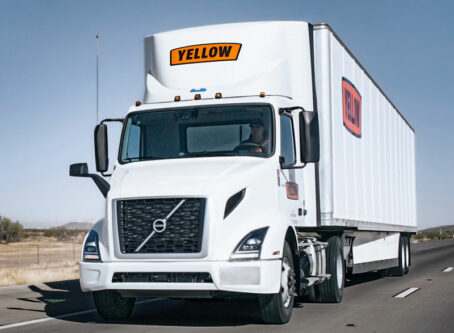Latest truck-involved fatal crash data questions safety regulations
The latest Large Truck and Bus Crash Facts report is in, and it raises many questions regarding the efficacy of federal regulations and who is to blame for truck-involved fatal crashes.
Published annually by the Federal Motor Carrier Safety Administration, the latest report reflects fatal crash data involving large trucks in 2019. Although the number of trucks involved in fatal crashes went up 2%, the number of those crashes and people killed were mostly unchanged.
In 2019, more than 5,000 large trucks were involved in fatal crashes, a 2% increase from 2018. However, the number of crashes rose slightly by 0.4%. More than 5,000 people were killed in truck-involved crashes, an increase of only one person.
Number of truckers killed in crashes climbs
According to the report, 767 drivers of large trucks were killed, up from 740 in 2018. A total of 123 passengers of large trucks were killed, down from 149.
Essentially, the fatal crash stats for large trucks has not gotten much worse, but it has not gotten any better either. That is despite the ELD mandate going into effect in December 2017, which was touted as an effort to increase highway safety.
On the other hand, there was a two-year phase-in period for ELD compliance that ended in December 2019. Full compliance did not begin until 2020. However, all federally regulated trucks were required to have either an automatic on-board recording device installed before December 2017 or a FMCSA-registered electronic logging device during that phase-in period. The only difference with the full compliance date is that trucks with AOBRDs must have switched to FMCSA-registered ELDs.
A deep dive into the latest large truck fatal crash data raises valid questions about how much blame should be shifted to the trucking industry for those crashes.
Tractor-trailers vs. other large trucks
It is worth noting that the report defines large trucks as those with a gross vehicle weight rating of more than 10,000 pounds. This may include numerous trucks that are not federally regulated.
Large truck fatal crash data began rising in 2016. Not coincidentally, the National Highway Traffic Safety Administration reclassified more than 300 light pickup trucks as large trucks that year. Previously, those trucks were counted as light trucks in crash stats. Consequently, it would be misleading to compare 2019 to numbers prior to 2016. However, 2019 numbers are down nearly across the board compared to the early 2000s and beyond to 1975. That is despite the increase caused by adding 300 truck types to the data.
Only 55% of the “large trucks” involved in fatal crashes were specifically tractor-trailers. About two-thirds were Class 8 (more than 33,000 pounds) trucks of any type. By cargo type, 40% were van/reefer, 12% flatbed and 7.5% tankers.
Whereas the data indicate increases in truck-involved fatal crashes, it is unclear how many of those trucks must follow FMCSA regulations.
Fatigue plays insignificant role in truck-involved fatal crashes
Even assuming all large trucks are federally regulated, some of the detailed data in the report suggests truckers may not be the root cause of many, if not most, of these fatal crashes.
To start, truckers have fewer driver-related factors attributed to them
Only 2% of truckers involved in a fatal crash had a blood-alcohol content of more than 0.08, compared with passenger vehicle drivers (20%), light truck drivers (19%) and motorcyclists (29%). More generally, 5% of truckers were found to be impaired, compared with 15% of passenger vehicle drivers.
Safety groups have raised concerns over trucker fatigue. However, the data does not support those concerns. Of all truck-involved crashes, only 1.4% of truckers were asleep or fatigued. That figure has been stagnant since at least 2017.
Only 5% of truckers involved in fatal crashes were found to be distracted. Drilling down further, 2.5% were found inattentive or distracted with details unknown. Furthermore, less than 1% had a cellphone-related distraction. FMCSA’s data does not specify distraction factors for passenger vehicle drivers.
Data also breaks down truck-involved fatal crashes by critical pre-crash event. More than 36% of those crashes involved another vehicle’s encroachment into the truck’s lane. Another quarter of fatal crashes involved another vehicle in the truck’s lane. Only 19% occurred after a truck’s movement.
Although fault is not accounted for in any of the data within the Large Truck and Bus Crash Facts report, many data points at least suggest that the truck driver played a smaller role in the causation of the fatal crash.
One thing is certain and objective: Large truck-involved crashes have been trending up since the ELD mandate began. LL









